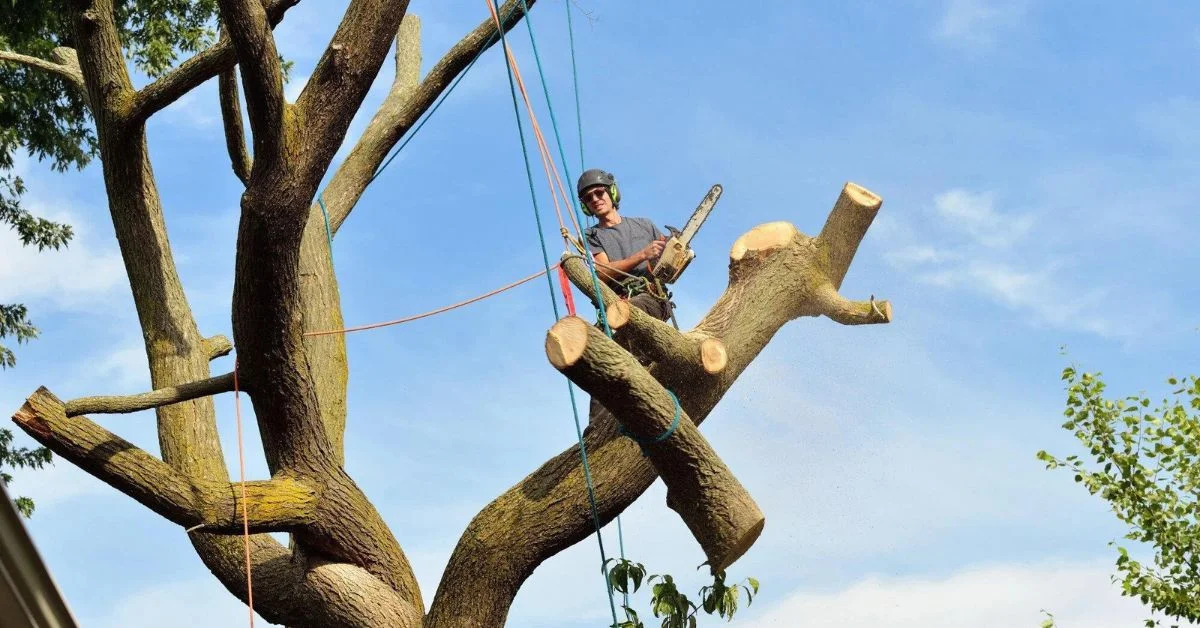HOME IMPROVEMENT
Dangerous Electrical DIY Mistakes

DIY home projects are a great way to save money and broaden your own skills, however, DIY can quickly turn perilous when electrics are involved. There are over 28 million DIYers in the UK, all of whom have the intention of improving their homes, however, there are some very real risks involved.
With electrical DIY, improper work can lead to short-circuiting, electrocution and even house fires. Here are some dangerous electrical DIY mistakes you should aim to avoid.
Cutting Wires Too Short
One common pitfall is cutting wires too short. This mistake can lead to poor connections and junction box overloads which heightens the risk of electrical fires. Sufficient wire length ensures that your connections are secure and aids future repairs or adjustments. This is all without the need to splice additional wire segments, which can compromise the integrity of the electrical system.
Having the right tools for electrical cutting is essential during this task. Hydraulic cable cutters not only make the job easier but also reduce the chance of electrocution and shorting.
Leaving Sockets and Switches Loosely Connected
Loose connections in sockets and switches can lead to arcing, which is a type of electrical discharge that generates heat and can ignite surrounding materials. Loose connections can also allow live wires to wiggle loose, exposing them to your fingers.
Ensuring that all connections are tight and secure is fundamental to preventing electrical fires and maintaining an efficient electrical system.
To ensure safe and efficient handling of complex electrical systems, it’s highly recommended to consult professional services like Electronic Power Design. Their expertise in electrical systems integration can help prevent issues such as loose connections and overloaded electrical boxes, reducing the risk of fires or shocks. You can learn more about their services here.
Overfilling Electrical Boxes
Cramming too many wires into an electrical box can cause overheating and electrical failure. Each box is designed to hold a certain number of wires to prevent overheating and allow for safe operation.
Overfilling these boxes not only risks short circuits but also makes future maintenance more challenging.
Wiring a Circuit Breaking Device Backwards
Improper installation of circuit breakers or wiring them backward can compromise the safety mechanisms designed to protect your home from electrical overloads and shorts. This can happen in RCBO or MCB devices in the UK or a GFCI in the US and can potentially lead to catastrophic consequences such as fires and lethal shocks.
Installing Cables Without a Clamp
Cable clamps are not an optional accessory, these tools are a necessity. They secure the cable to the box and protect the insulation from damage. Without a clamp, cables can move freely, leading to wear on the insulation and potentially exposing live wires. This oversight can lead to overheating, short circuits, fires and electrical shocks if touched.
HOME IMPROVEMENT
Luxury on a Budget: Tips for Affordable Bathroom Upgrades in San Angelo

Nestled along the picturesque Concho River in West Texas, San Angelo exudes a charming blend of historic beauty and modern allure. As residents of this vibrant city seek to enhance their living spaces, the bathroom often takes center stage. However, achieving a luxurious bathroom transformation while staying within budget can seem like a daunting task. Fear not, for in this guide, you will explore savvy tips and tricks to elevate your bathroom without breaking the bank, with insights tailored to homeowners seeking affordable upgrades and the expertise of local plumbers in San Angelo.
Refinishing Bathtubs
Refinishing your bathtub is one of the quickest and most cost-effective ways to upgrade your bathroom. Over time, bathtubs can become worn, stained, or outdated, but instead of replacing them entirely, consider refinishing them to give them a fresh new look.
Bathtub refinishing kits are available in hardware stores, which can be a budget-friendly option if you’re handy with home improvement projects.
Elevating Your Bathroom Design
Upgrading your bathroom faucets is another easy yet great way to add a touch of luxury to your space without breaking the bank. Look for stylish yet cost-effective options that complement your bathroom’s aesthetic while staying within your budget.
You can shop at home improvement stores or online retailers for budget-friendly faucet options. You’ll be surprised at the variety of stylish designs available at affordable prices. Additionally, opting for faucets with water-saving features can help you save on your water bill in the long run, making them both stylish and practical upgrades for your bathroom in San Angelo.
Updating Lighting Fixtures
Good lighting will make all the difference in a bathroom, transforming it from ordinary to extraordinary. Upgrading your lighting fixtures is a quick and inexpensive way to enhance the ambiance of your space while also improving functionality.
Consider replacing outdated fixtures with modern, energy-efficient options that provide ample illumination without breaking the bank. LED lighting, in particular, is a cost-effective choice that offers long-lasting brightness and energy savings. Adding dimmer switches can also allow you to change the lighting according to your mood and create a relaxing spa-like atmosphere in your bathroom.
Incorporating Eco-Friendly Elements
Another excellent way to enhance your bathroom’s appeal while being budget-conscious is to incorporate eco-friendly elements. Sustainable upgrades benefit the environment and save you money on utility bills.
Look into installing low-flow showerheads and toilets to reduce water consumption without compromising performance. These fixtures are readily available in San Angelo and can significantly decrease water usage, lowering water bills without sacrificing comfort.
When to Call in the Experts
While many bathroom upgrades can be done DIY style, specific tasks are best left to the professionals, especially when it comes to plumbing. Whether you’re installing a new shower, relocating plumbing fixtures, or dealing with a stubborn leak, hiring professional plumbers in San Angelo can save you time, money, and hassle in the long run. They have the expertise, tools, and experience to tackle even the most challenging plumbing projects efficiently and effectively. They can also help you avoid costly mistakes and ensure your bathroom upgrades are done safely and up to code.
Transforming your bathroom into a luxurious oasis doesn’t have to cost a fortune. By following these budget-friendly tips for affordable bathroom upgrades in San Angelo, you can achieve the look and feel of a high-end spa retreat without breaking the bank. So go ahead, unleash your creativity, and turn your dream bathroom into a reality!
HOME IMPROVEMENT
When Is Emergency Tree Removal Necessary? Signs to Look Out For

Tree care is often a neglected aspect of home maintenance. Yet, recognizing when emergency tree removal is necessary can prevent costly damage to your property and ensure safety.
Trees, though majestic, can become hazards overnight. From severe weather impacts to disease, the reasons vary.
This blog guides you in identifying critical signs that demand immediate action. Understanding these signs ensures you’re never caught off guard. Keep reading to learn when to call for emergency tree removal.
Understanding Tree Health
The health of a tree is an essential factor in determining its risk. Signs of disease or decay-such as fungal growth at the base, dead or hanging branches, and discolored leaves-can indicate that a tree is failing. Regular inspections by professionals, such as Earthwork Tree Service in Bellingham, WA, can help identify these signs early, potentially saving the tree and preventing future hazards.
Visible Damage After a Storm
Severe weather can wreak havoc on trees, leaving them with storm damage or unstable. After a storm, scheduling a tree service Mechanicsburg PA, is crucial to inspect broken branches, splits, or leaning. These conditions may necessitate immediate attention to avoid the tree failing unexpectedly.
Leaning Trees
Not all trees that lean are a danger, but sudden or severe leaning indicates instability. If you notice a tree leaning more than usual or the soil at the base is disturbed, it’s time to consult with a professional.
Proximity to Power Lines
Trees that grow too close to power lines not only pose a risk of power outages but also represent a severe fire and tree hazard and a danger to anyone who comes into contact with them. Regular pruning or, in some cases, removal, ensures safety and compliance with local regulations. For residents needing assistance, professional tree service Mechanicsville MD, offers professional pruning and removal to maintain safety and meet regulatory standards.
Signs of Internal Decay
External signs often hint at internal decay, but sometimes the inside of a tree rots while the outside appears normal. Professionals like Top Tier Trees can perform more detailed assessments to identify internal decay signs and recommend appropriate actions.
Root Damage or Decay
The root system is crucial for a tree’s stability. Damage or decay can compromise this, making the tree a hazard. Signs include visible root decay, fungi growth around the base, and soil upheaval opposite the lean side of the tree.
Cracks in the Trunk
Cracks or splits in the trunk can significantly weaken a tree, making it more likely to fall during storms or high winds. These defects can sometimes be mended, but often removal is the safest option.
Dead or Hanging Branches
Though sometimes hard to spot in large trees, dead or hanging branches pose a risk of falling at any time, potentially causing injury or property damage.Regular pruning removes this danger, but in cases of large-scale death, tree removal might be necessary, making it essential to consult a tree service Denton to assess the situation and ensure the safety of your property.
Fungus Growth
The presence of certain types of fungus, especially around the base of a tree, can be a sign of root decay or other health issues. Not all fungi are harmful, but their presence warrants a closer look by a tree care professional.
Taking Action on Emergency Tree Removal
Getting rid of an emergency tree is not something that should be taken lightly. It is an active step toward making sure that people and property are safe.
Property owners can effectively lower risks if they can spot the above signs. Quick action can stop disasters and expensive damage before they happen.
When these warning signs show up, it’s important to talk to tree care professionals. To keep things safe and secure, it’s important to know when emergency tree removal is needed.
Did you like this guide? Great! Please browse our website for more!
HOME IMPROVEMENT
Get The Most Bang For Your Buck With These Home Improvement Projects

You want to get the most value out of any home improvement project that you do. You’re going to be spending money on them, after all. But which ones will give you the most bang for your buck? You might be asking if “Can I add outlets to my home?” is one of them. Read on to learn more.
You Improve Your Curb Appeal
Whether you’re going to put your home on the market or not, curb appeal plays a big part in how your home is viewed. Not only will you like what you see, so will your neighbors. That’s because if your home looks nice, it can boost the value of the other homes in the neighborhood. Of course, if they do the same, then you’re going to get that push in price, too.
You can have some low-cost landscaping work done. This includes planting flowers, trimming hedges, and adding mulch. You can also add some plants. This will liven up your place.
People notice the exterior of your home. Make them stop and look twice by adding a fresh layer of paint. That can transform a home that looks old into one that looks brand new. You can add to that by adding new siding first before painting.
Your front door is far more than just an entry to your home. If it looks rickety or dilapidated, it can make the home look the same, even if you do the above. You should get a new and stylish composite stable door to increase the appeal.
Improve Your Kitchen
You don’t necessarily have to go all out and get a full kitchen remodel done. This could increase the value of your home, though, since potential buyers tend to like modern kitchens. You can improve it, though, by doing something as simple as getting new cabinets. That alone can give your kitchen a new look. You can even just have the cabinets refaced. That alone can change the look and feel of the kitchen. Add some new hardware, and could spend $2,000 instead of $15,000 or more.
Just like your exterior, you could also change the look of your kitchen with a fresh coat of paint. That can change it from something that looks like it’s straight out of the 1970s to modern times. That’s also a lot cheaper than a full kitchen remodel.
Update Your Bathroom
Here’s another area that a lot of people like to remodel. Like the kitchen, making a full change can be very expensive. Instead, you can make some subtle modifications. Change the fixtures, like the faucets and shower heads.
You can also replace or reglaze your bathtub. Both of them can change the look of the bathroom. Adding new mirrors or lights can also achieve that effect. Best of all, you can get things that look modern without having to break your budget.
Improve Your Flooring
You don’t have to pay a lot to have people come rip up your floor and add new things. Instead, you can just have your hardwood floor refinished or have laminate flooring installed. Both of these options will be easier for your budget.
Make Your Place More Energy Efficient
You don’t want to be afraid to open your energy bill. There are a lot of ways you can make your place more energy efficient. Get LED bulbs, which require a lot less electricity while also lasting a lot longer. Look around and see if you notice any holes in the sealants around the windows. It’s simple to seal those up again and keep your heater or air conditioner from working too hard, which can drive your energy bill up.
Get Smart Technology
This is another way to save money. By getting a smart thermostat, for example, you can set it to have the air conditioner or heater only run at peak level when you’re home at a certain time. The same goes for lighting and security. All of these things come at a much more affordable cost.
You don’t have to break the bank for any of these things. In fact, you can get back a lot of anything you put into these things if you sell your home. That will make it worth it.

 ENTERTAINMENT4 days ago
ENTERTAINMENT4 days agoExploring the Kristen Archives: A Treasure Trove of Erotica and More

 ENTERTAINMENT1 day ago
ENTERTAINMENT1 day agoKiss KH: The Streaming Platform Redefining Digital Engagement and Cultural Currents

 EDUCATION1 day ago
EDUCATION1 day agoLingrohub Platform: A Complete Student Access Guide

 LIFESTYLE4 months ago
LIFESTYLE4 months agoThe Disciplinary Wives Club: Spanking for Love, Not Punishment

 TECHNOLOGY4 months ago
TECHNOLOGY4 months agoBlog Arcy Art: Where Architecture Meets Art

 TECHNOLOGY1 day ago
TECHNOLOGY1 day agoCasibom: The Digital Alchemy Reshaping Systems, Society, and Self

 BUSINESS24 hours ago
BUSINESS24 hours agoDiversifying Your Portfolio: The Key to Successful Investing in Portland, Oregon

 TECHNOLOGY24 hours ago
TECHNOLOGY24 hours agoSecuring Your Online Presence: The Ultimate Guide to Buying an SSL Certificate












